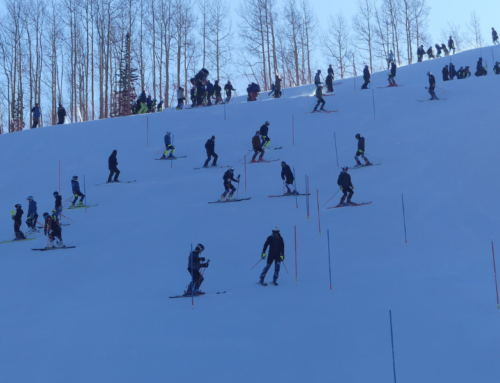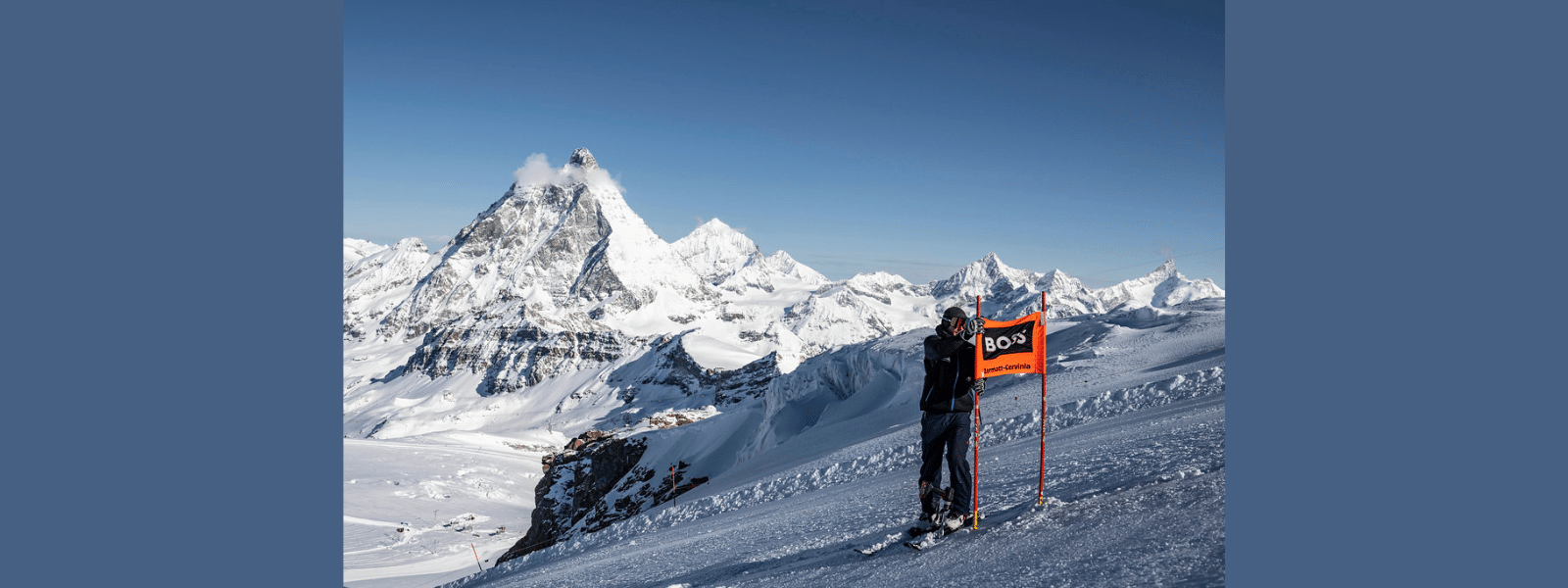Grin and dare it: Lisa Kosglow has risen to the top through hard work — and good humor
Grin and dare it: Lisa Kosglow has risen to the top through hard work — and good humor Lisa Kosglow did something strange as she waited in the start gate for her last run in the Salt Lake 2002 Games. She smiled. Head-to-head competition, one shot at glory, and she beamed down at the 15,000 spectators, cheering from the finish area. Afterward, she heard a few comments from those who had seen her on TV. “A lot of people frowned on my smiling in the start gate, they accused me of not being focused,” says Kosglow.
Lisa Kosglow did something strange as she waited in the start gate for her last run in the Salt Lake 2002 Games. She smiled. Head-to-head competition, one shot at glory, and she beamed down at the 15,000 spectators, cheering from the finish area. Afterward, she heard a few comments from those who had seen her on TV. “A lot of people frowned on my smiling in the start gate, they accused me of not being focused,” says Kosglow.
But just the opposite was true. That smile was indicative of just how intensely “in the moment” she was. “You could feel the support from the crowd,” she says. “They were sending out so much energy and I opened myself to it. It was one of the most unbelievable experiences I have ever had.”
At that moment, Kosglow was behind France’s Karine Ruby by 0.6 seconds after her first run in the quarterfinals, and determined to make up the difference on the next run. She took the energy from the crowd poured it into her steel edges as she railed down the course, gaining momentum with every turn and gradually pulling ahead of Ruby.
Suddenly, she lost an edge. Just like that, her Olympic turn was up. Kosglow ended up in eighth place and, though she had the potential to win, considers her experience at Salt Lake as one of pure redemption. “I have no qualms about it,” she says. “I have watched that run over and over and there is really nothing I could have done differently.”
And besides, she had a whole lot of fun in Salt Lake. After a generally disappointing experience at Nagano in 1998, Kosglow came into her second Olympic Winter Games with a new perspective and a different agenda. She had read an old quote from Tara Lipinski in which she said she planned to have more fun than anyone else at the Nagano Games, and adopted this motto as her own for Salt Lake. Says Kosglow, “I have tried the serious route and I never did well.”
A solid foundation
Kosglow, a two-time Olympian and two-time silver medalist in world championships, first tried snowboarding at age 15 at Bogus Basin, her home mountain near Boise, Idaho. She gravitated to summer snowboard camp at Mount Hood and started competing on the regional circuit the next winter. In her debut competition, she won the halfpipe and took second in the slalom.
After graduating from high school in 1992, Kosglow moved to Aspen to train with Nick Colavito; they met at Hood and he would coach her on and off for the next six years. That season of 1992-93, Kosglow won the senior women’s overall title at the national championships. She also built her confidence on the competitive Rocky Mountain Series before trying her hand at international competition on the International Snowboarding Federation (ISF) World Series Tour in Europe. “The ISF tour was intimidating and I felt like I was in over my head,” she says. “I was young and arrogant and thought I would just go over there and win.”
Such intimidation was one of many hurdles Kosglow met on the road to competitive maturity. A devastating injury — she broke her back in a super-G training crash at the 1996 U.S Open — combined with ongoing trouble finding a compatible coach, had her wondering if it was all worth it. Another blow came when a well-respected, potential coach told her father that Kosglow’s small stature (5’3″, 118 pounds) would prevent her from ever reaching the Olympic podium. Instead of taking this defeatist attitude to heart, Kosglow became even more determined: “I just came to this decision that I had it in me.”
Her instincts were on target; she soon won the first-ever snowboard Grand Prix giant slalom, at Sugarloaf in 1997. “That will probably forever be my favorite race,” she says. “I can still remember the course and my run.” Later that season, she won a silver medal at the ISF World Championships in Heavenly Valley. Then she went back to the U.S. Open and won the prestigious super-G title.
Staying strong
Those who know Kosglow credit her fighting spirit for her success. “She has always had fire in her,” says her younger sister, Kristin. “There is this picture of her as a child with a black eye, wearing this little pink Easter dress, that tells the whole story. There she is, with this beautiful smile and this big ol’ shiner from fighting the neighborhood bully.”
Nick Smith, U.S. Snowboard Team alpine coach also an inner and outer strength in Kosglow. “Her physical strength is a huge asset over the course of a season. There is a ridiculous amount of power and energy in that little frame of hers,” he says. “And Lisa is remarkably bold and strong-willed. Her ability to set clear attainable goals and, more importantly, see them through, shows her experience.”
These qualities have helped Kosglow through interesting times in the snowboarding world. She’s seen competition evolve from the grassroots of the ISF to the FIS World Cup level and the Olympic Winter Games. Though she initially resisted the confines of the FIS, she joined the U.S. Snowboard Team in 1999 out of basic necessity. “I ran out of energy to look for sponsors,” says Kosglow. “The national team was also becoming more ‘legitimate’ in that the majority of top riders were there; it just made sense.”
After she transitioned to “the other side,” Kosglow suffered several disruptive injuries and found herself unable to break the top sixteen and feeling somewhat alienated. “It was difficult, I felt unwanted,” she says. “I had fought against USSA for a long time. It took a while to shake this out and now I think it’s phenomenal what the U.S. team can offer athletes.”
She’s also received a boost from a little soul-searching, with the help of performance enhancement trainer Maggie Connor of Ultimate Journey Productions. “Her advice has been world-shattering for me,” says Kosglow. “She is the main reason I was able to overcome the obstacles that were blocking me from success.” Now, Kosglow says, “I love the training side of snowboarding. I like to push myself and see growth and I’m fascinated by the human potential, what we do to encourage it and what we do to hinder it.”
Last season, she posted several top tens and two World Cup podiums and was the only American woman in the Olympic finals. Kosglow’s goals for the upcoming season are just as bold and straightforward as her personality. “I want to win the World Championships,” she says. With a podium finish (third in Valle Nevado, Chile) already under her belt, she seems to be on her way. And no matter the outcome, you can bet she will be smiling.





















